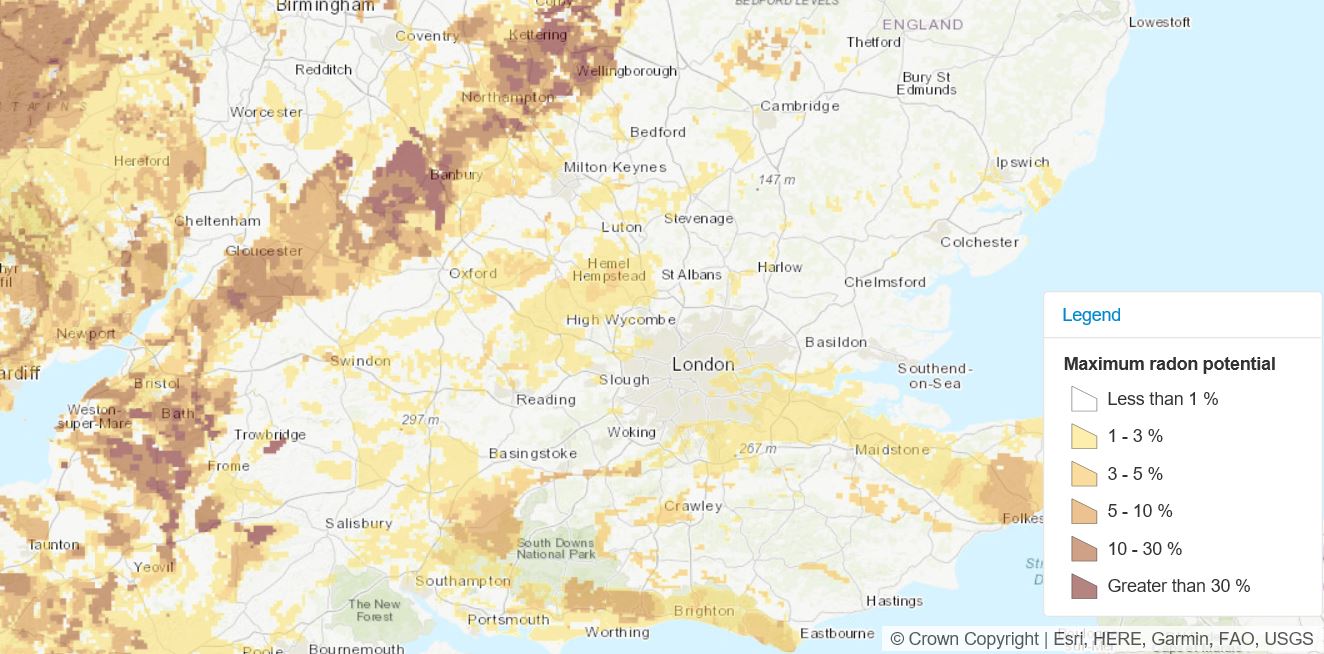
Radon is a natural radioactive gas, originating from uranium which occurs in
many types of rock. All water and air contains some radon, though levels are
normally much too low to be of concern. For many years it has been recommended
that, if the concentration of radon in indoor air exceeds the Action Level of
200 becquerels per cubic metre, steps should be taken to reduce it.
It is now recognised that some private water supplies contain levels of
radon which should also be controlled. However, it is important to recognise
that radon in water almost certainly presents a smaller public health hazard
than radon in air, both in term of the numbers of people exposed to high levels,
and in terms of the risks to the most exposed individuals. People living all
their lives at the Action Level run the risk of a few percent of developing lung
cancer. On average, about one in thirty people exposed for a lifetime at the
Action Level would be expected to develop lung cancer.
New research suggests that around 1000 people may die each year as a result
of radon, with smokers at a greatly increased risk.
Measuring Radon in the Home
The best guide to the level of radon in a building is a measurement kit from The
Health Protection Agency. This takes three months - and an additional month or
so to process and report the results. It is a simple procedure with monitors
issued and returned by normal post, so no visit is required. The individual
result for each home is confidential and will not be given to anyone else
without the prior consent of the householder. The price includes the supply of
two radon detectors (with full instructions for their use), subsequent analysis
and reporting of the result. All packaging and the return postage costs are also
included.
Radon levels in homes vary during the day, from one day to the next, and
from winter to summer, mainly because of temperature differences between indoors
and outdoors. They are generally higher at night and during the winter. Long
term monitoring must be undertaken as Radon levels vary so much that it is not
possible to predict with any certainty the long-term values from short-term
measurements. Geiger-counters are unable to detect radiation from radon and its
decay products at the levels found in homes.
Although radon enters homes all the time, some is carried away by the
natural ventilation. Even in a home with good draught proofing and double
glazing, the air changes several times a day. Increasing the ventilation,
especially on the ground floor, will in most cases cause a moderate reduction in
the radon level. Extractor fans can sometimes aggravate radon problems, if a
suitable air inlet is not provided, as they may draw soil gas into the house.
Radon Reduction Even in Affected Areas most homes have low levels of radon
and high levels can generally be reduced at fairly moderate cost. Concern about
radon should not therefore influence your choice of home. The cost will vary
with the type of work carried out. For simple measures, such as making sure
airbricks are clear, it could be as little as a few tens of pounds. The average
cost of a radon sump, the most effective way to reduce high levels, is about £1,500.00. Of course, if you are able to do the work yourself, the cost will be
much less.
A Radon sump is a small void under a solid floor connected by a pipe to the
outside. A small electric fan in the pipe continually sucks the radon from under
the house and expels it harmlessly to the atmosphere. Modern sumps are often
constructed from outside the house so there is no disruption inside. The power
of the fan is typically around 75 watts; about the same as a light bulb and runs
all the time.
 The Public Health England Radon map
The Public Health England Radon map

 The Public Health England Radon map
The Public Health England Radon map